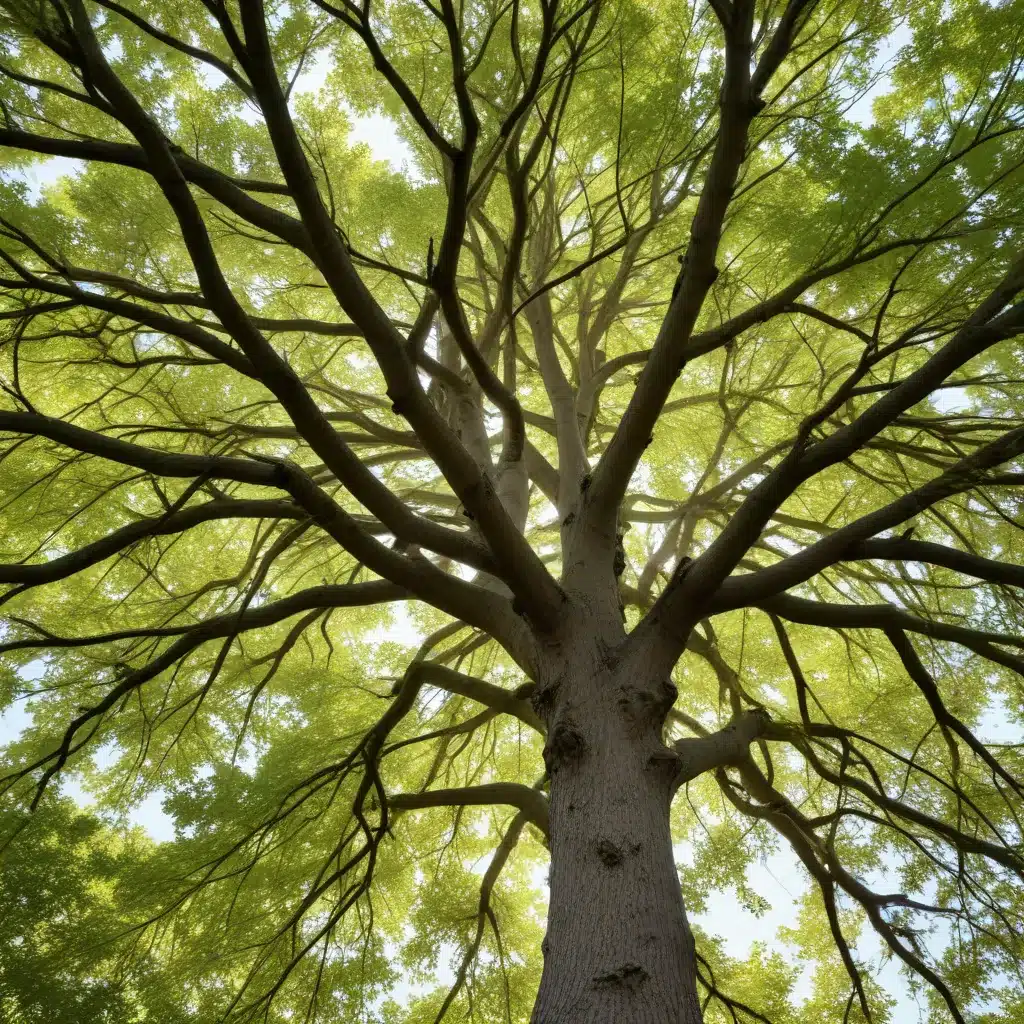
As a tree care specialist for TriCounty Tree Care, I’m honored to share insights on navigating the intricate dance between trees and the seasons. Just as the Earth’s rhythms shape our lives, they profoundly influence the health and vitality of our urban and suburban forests. By understanding the nuanced changes that each season brings, we can cultivate sustainable, ecologically-balanced landscapes that thrive year-round.
Tree Biology and Lifecycle
At the heart of seasonal tree care lies a deep appreciation for plant biology and the cyclical nature of growth. Trees, like all living organisms, undergo dynamic transformations in response to environmental cues.
Seasonal Changes in Trees
As the calendar progresses, trees transition through distinct phases, each with its own demands and opportunities. In spring, buds swell and new foliage emerges, signaling a period of rapid growth and heightened nutrient needs. Summertime brings an abundance of photosynthesis and biomass accumulation, while autumn ushers in the gradual dormancy and resource allocation for winter survival.
Dormancy and Rejuvenation
During the colder months, trees enter a state of dormancy, slowing their metabolic processes to conserve energy. The reduction in transpiration and root activity allows the plant to weather the harshest conditions. Yet, this dormant period is essential for bud development and root growth, laying the foundation for the vibrant resurgence of spring.
Nutrient Cycling and Resource Allocation
Trees are masterful at managing their resources, shifting the flow of carbohydrates, water, and minerals in accordance with seasonal demands. In autumn, deciduous trees relocate nutrients from their leaves to their roots and woody structures, preparing for winter’s rest. This process not only nourishes the tree but also enriches the surrounding soil, contributing to the ecological cycle.
Pruning and Trimming Techniques
Proper pruning is a crucial aspect of seasonal tree care, as it enhances the health, structure, and aesthetics of our woody companions. However, understanding the optimal timing and techniques is essential to avoid causing undue stress or harm.
Proper Pruning Practices
Pruning should be carried out with precision, removing dead, damaged, or competing branches to redirect the tree’s energy into its most vital components. Cuts should be made at the branch collar, leaving a smooth, angled surface that encourages rapid wound healing.
Timing of Pruning
The ideal time to prune varies by species and local climate. Generally, dormant season pruning (late winter or early spring) is recommended for most deciduous trees, as it minimizes the risk of disease and pest infestations. Evergreens, on the other hand, often benefit from midsummer pruning to encourage dense foliage.
Tools and Safety Considerations
Utilizing the proper tools, such as hand pruners, loppers, and chainsaws, is essential for clean, precise cuts. Maintaining sharp, well-calibrated equipment not only enhances efficiency but also reduces the likelihood of tearing or damaging the tree’s tissues. Additionally, adhering to safety protocols, including personal protective equipment (PPE) and proper work practices, ensures the well-being of both the tree and the arborist.
Environmental Factors Affecting Trees
Trees do not exist in a vacuum; they are inextricably linked to the surrounding environment. Understanding how various abiotic and biotic factors influence tree health is crucial for implementing effective seasonal care strategies.
Climate and Weather Patterns
Temperature fluctuations, precipitation levels, and wind patterns can all have a profound impact on tree growth and resilience. Extreme weather events, such as droughts, floods, or ice storms, can pose significant threats, requiring proactive mitigation and recovery measures.
Soil Conditions and Drainage
The quality and drainage of the soil in which a tree is planted play a pivotal role in its overall well-being. Nutrient-rich, well-aerated soils promote root development and nutrient uptake, while compacted or waterlogged soils can lead to root asphyxiation and other detrimental conditions.
Pests and Diseases
Trees are susceptible to a variety of insect pests and pathogenic diseases, which often thrive in specific seasonal conditions. Monitoring for early signs of infestation or infection and implementing integrated pest management (IPM) strategies can help mitigate these threats.
Sustainable Tree Management
As stewards of the urban and suburban forest, our responsibility extends beyond addressing immediate concerns. Embracing a holistic, ecologically-minded approach to tree care ensures the long-term vitality and resilience of our leafy companions.
Preserving Ecological Balance
Trees are not isolated entities but integral components of a complex ecosystem. By considering the interconnectedness of flora and fauna, we can implement practices that promote biodiversity and environmental health, benefiting both the trees and the broader community.
Community Involvement and Education
Engaging the local community in the care and appreciation of trees is a powerful way to foster a sense of shared responsibility and environmental stewardship. Through educational initiatives, volunteer programs, and collaborative projects, we can empower residents to become active participants in the sustainable management of their urban forest.
Long-term Planning and Monitoring
Effective seasonal tree care requires a forward-thinking approach, considering the long-term implications of our actions. By developing comprehensive management plans, regularly monitoring tree health, and adapting our strategies to emerging challenges, we can ensure the resilience and longevity of our urban and suburban tree canopies.
As a tree care specialist for TriCounty Tree Care, I am honored to guide our community through the ebb and flow of seasonal tree maintenance. By cultivating a deep understanding of tree biology, leveraging best practices in pruning and environmental management, and embracing a holistic, sustainable approach, we can foster vibrant, healthy landscapes that thrive in harmony with nature’s rhythms. Visit TriCounty Tree Care to learn more about our comprehensive tree care services and how we can help you navigate the seasonal dance of your urban forest.


